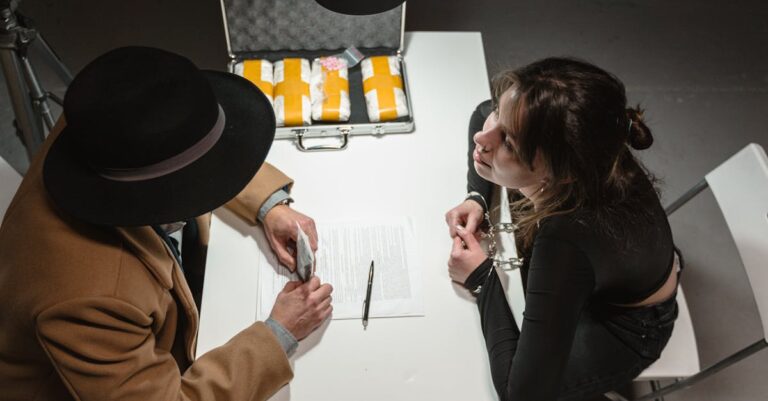
The first thing she noticed was the cold. Not the kind that curled around your bones and made you shiver, but a deeper chill, the sort that seeped into your ribs and left your thoughts sluggish. She blinked, her vision swimming through a haze of white light. The ceiling above her was smooth, featureless, like a blank page waiting to be written on. Her fingers twitched against the sterile fabric of the table beneath her, the material stiff and unfamiliar. A low hum filled the air, a sound that didn’t belong to any machine she recognized. It was there, constant, like a heartbeat she couldn’t feel.
She tried to sit up, but her limbs felt heavy, as if someone had poured sand into her joints. A metallic scent clung to the air, sharp and sterile, mingling with the faint tang of ozone. Her pulse quickened. Where was she? The last thing she remembered was the sound of glass shattering, a blinding flash of light, and then—nothing. Only the cold.
A door hissed open somewhere behind her. She turned her head, wincing at the effort, and saw two figures in white coats approaching. Their faces were obscured by masks, but their movements were precise, practiced. One of them carried a clipboard, the other a small device that pulsed with a faint blue light. The man with the clipboard spoke, his voice flat and clinical.
“Subject 17-A. Vital signs stable. Memory retention at 68%.” He glanced at the woman, then back at the clipboard. “Prepare for Phase Three.”
The second technician, a woman with a voice like rusted metal, responded. “Phase Three is risky. The emotional triggers could destabilize her further.”
“Risk is inherent,” the first man said. “We need the data. If she can’t access the core, we lose the window.”
The woman didn’t respond. She stepped closer, her boots clicking against the floor. The blue light from her device flickered as she held it near the woman’s temple. A sharp pain lanced through her skull, brief but searing. She gasped, her fingers digging into the table.
“What… what are you doing?” Her voice was hoarse, unfamiliar.
The technician didn’t answer. The device hummed louder, and the woman’s vision blurred again. This time, the blackness wasn’t empty. It swirled, fragments of images flashing—a room filled with monitors, a man in a lab coat shouting, a door slamming shut. Then nothing.
The technician stepped back. “Memory retention dropped to 52%.
“We’ll try again tomorrow,” the first man said. “If she can’t access the core, we need to consider… alternatives.”
The woman didn’t hear the rest. Her mind was already drifting, chasing the ghost of a memory that slipped through her fingers like water. She didn’t know what the core was, but she knew one thing: whatever they were trying to take from her, it wasn’t just memories. It was something deeper. Something they feared.
The next day, she found the first note.
It was tucked beneath the edge of the table, half-hidden by a patch of dust. She pulled it out carefully, her fingers trembling. The paper was thin, almost translucent, and the writing was jagged, as if scrawled in a hurry. “They’re not trying to erase you,” it read. “They’re trying to control what’s left. Find the key. It’s in the silence.”
She stared at the words, her breath shallow. Who had written this? And what did they mean by “the key”? The note felt like a thread, fragile but real, leading her somewhere she wasn’t sure she wanted to go.
That night, she began to listen.
Not the sounds around her—the hum of machines, the distant murmur of voices—but the silence between them. It was there, thick and heavy, pressing against her like a living thing. She closed her eyes and focused, letting the noise fade until all she could hear was the rhythm of her own heartbeat. Then, faintly, something else. A pattern, like a code hidden in the static.
She didn’t know how long she sat there, but when she finally opened her eyes, the room felt different. The cold was still there, but it no longer felt empty. It felt… aware.
The next note came two days later. This time, it was written on a scrap of fabric, its edges frayed. “The core isn’t in your mind,” it said. “It’s in your fear. But don’t let them see you face it.”
She didn’t sleep that night. Instead, she sat in the corner of the chamber, her back against the wall, and let the fear come. It wasn’t a single thing—it was a cascade, memories she couldn’t quite remember but felt deep in her bones. The sound of a door slamming. A voice screaming. The weight of something vast and unknowable pressing against her chest.
When the technicians came for her, she was ready.
“Subject 17-A,” the man with the clipboard said, his tone unchanged. “We need to run another test.”
She met his gaze, her own steady. “What are you really trying to do?”
The woman with the device hesitated. For a fraction of a second, her mask slipped, and the woman saw something in her eyes—uncertainty.
“We’re trying to save you,” the man said. “But you’re not yourself anymore. The memories are corrupting you.”
“Then why hide it?” she asked. “Why not just tell me what I am?”
The man didn’t answer. Instead, he turned to the woman with the device. “Prepare for the sequence.”
The device hummed again, but this time, she didn’t flinch. She let the pain come, let it sear through her mind. And as it did, she reached for the key.
It was there, buried in the silence, in the fear, in the fragments of a memory she couldn’t quite grasp. She didn’t know what it was, but she knew one thing: they weren’t trying to erase her. They were trying to break her. And she wasn’t going to let them.
The next day, she found the final note.
It was written in her own hand, the ink smudged and uneven. “The core is you,” it read. “But they don’t understand it. They think it’s a weapon. It’s not. It’s a choice. Don’t let them take it.”
She stared at the words, her chest tight. A choice. That was what this had always been. Not control, not memory, but something deeper. Something they couldn’t quantify.
When the technicians came for her again, she was ready.
“Subject 17-A,” the man said, his voice steady. “We need to run the final test.”
She stood, her legs unsteady but determined. “I know what you’re trying to do,” she said. “And I won’t let you.”
The woman with the device stepped forward, her mask back in place. “You don’t understand. The core is too dangerous. If it’s not controlled, it could destroy everything.”
“Then why hide it?” she asked. “Why not tell me what I am?”
The man didn’t answer. Instead, he turned to the woman with the device. “Initiate the sequence.”
The device hummed, and the room darkened. The cold thickened, pressing against her skin like a living thing. She felt it—something vast and unknowable, coiled in the silence. And for the first time, she didn’t fear it.
She reached for the key, and the world shifted.
The chamber dissolved around her, replaced by a vast expanse of light and shadow. She saw herself, not as a person, but as a force—a current of energy, raw and unbounded. The technicians were there, but they looked small, fragile. And she understood: this wasn’t about control. It was about freedom.
She didn’t know what came next. But she knew one thing: the core wasn’t in her mind. It was in her. And no one would take it from her again.

